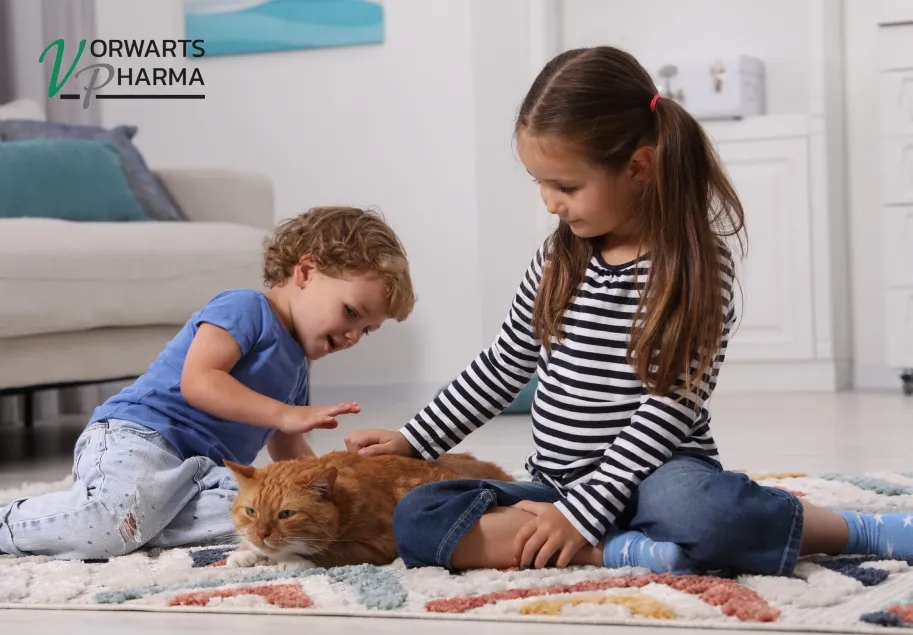Useful articles
Autumn sleep: why it changes and how to restore evening calm
14.11.2025
How Seasonal Changes Affect Well-being: Why It’s Worth Supporting the Body in Autumn
13.11.2025
How Digital Overload Affects the Brain and What to Do to Stay Focused
11.11.2025
Autumn Menu for a Strong Immune System: Foods to Add to Your Diet
10.11.2025
Spider Veins on the Legs: Why They Appear and How to Stop Them from Progressing
07.11.2025
How Helminths Are Transmitted in Children: Common Sources and Family Protection Rules
Date: 19.11.2025

Children are always active: games, walks, nature, friends, pets. In this natural environment, situations may occur where a child comes into contact with helminth infection. This article explains how worms are transmitted in children, the main infection routes, how to organize family prevention, and key hygiene rules.
How children get infected most often
- through dirty hands or contaminated surfaces;
- through soil and sand;
- through unwashed vegetables, fruits, or water;
- through contact with animals;
- through shared household items.
Most common situations of transmission
Infection typically occurs unnoticed. It’s enough to touch the face after playground games or pick up an unwashed apple. Children explore the world actively, and tiny soil or dust particles may carry helminth eggs. Shared toys are also a common transmission route — they constantly move from hand to hand.
Less frequently, but possible, helminth eggs enter the home on shoes or pet fur after walks.
Typical sources of helminth infection
Household items
Door handles, building blocks, plush toys, elevator buttons — all can accumulate dirt passed from hands.
Food and water
Vegetables, berries, greens, and water from unverified sources may contain soil particles. Thorough washing remains a simple and effective rule.
Sandboxes and soil
Sand often gets under nails, on hands, or clothes, so children who spend time outdoors need more frequent handwashing.
Domestic and outdoor animals
Animals may carry dust and soil particles on their fur or paws — a normal part of their interaction with the environment.
How to Avoid Infection: Practical Guide for Families
Hand hygiene
- wash hands after the playground, school, and before meals;
- teach children not to touch their faces with unwashed hands;
- keep nails short.
Home cleanliness
- wash toys regularly;
- change bed linen frequently;
- do wet cleaning to reduce dust accumulation.
Food safety
- wash vegetables and fruits thoroughly;
- avoid questionable water sources;
- store raw and cooked foods separately.
Proper pet care
- wash paws after walks;
- don’t allow children to touch bowls or litter trays;
- clean pet resting areas regularly.
“Source — Risk — Action”
|
Source |
Potential Risk |
What to Do |
|
Sandbox |
dirt on hands |
wash hands after walking |
|
Toys |
shared use |
wash toys regularly |
|
Fruits and greens |
soil remnants |
rinse under running water |
|
Pets |
dust transfer |
wash paws after walks |
|
Household surfaces |
dust accumulation |
do wet cleaning |
Comprehensive Approach During Increased Exposure: The Role of Vormatik
Parents often prefer a comprehensive approach — especially during periods of active walks, school activities, and frequent contact with other children and pets. Vormatik, a dietary supplement from Vorwarts Pharma, may be helpful as part of such an approach. It is a European-quality product considered as an additional support during helminth exposure.
More about Vormatik:
https://vorwartspharma.com/en/kataloh/dijeticni-dobavki/wormatik

FAQ: Common Questions About Transmission Routes
- How do children most often get infected?
Through dirty hands after walks or via toys touched by other children. - Can helminths be transmitted through pets?
Indirectly — pets may carry dust or soil particles. - Is handwashing alone enough?
It is the main rule, but should be combined with toy and surface hygiene and washing products thoroughly.
When parents understand how helminths are transmitted, it becomes easier to arrange daily routines to reduce risks. Regular handwashing, clean toys, careful food handling, and responsible pet contact habits all help keep the family safer.
During periods when families want a more comprehensive approach, products like Vormatik from Vorwarts Pharma can be considered as part of a well-planned home strategy.
More about dietary supplements:
https://vorwartspharma.com/en/kataloh/dijeticni-dobavki




